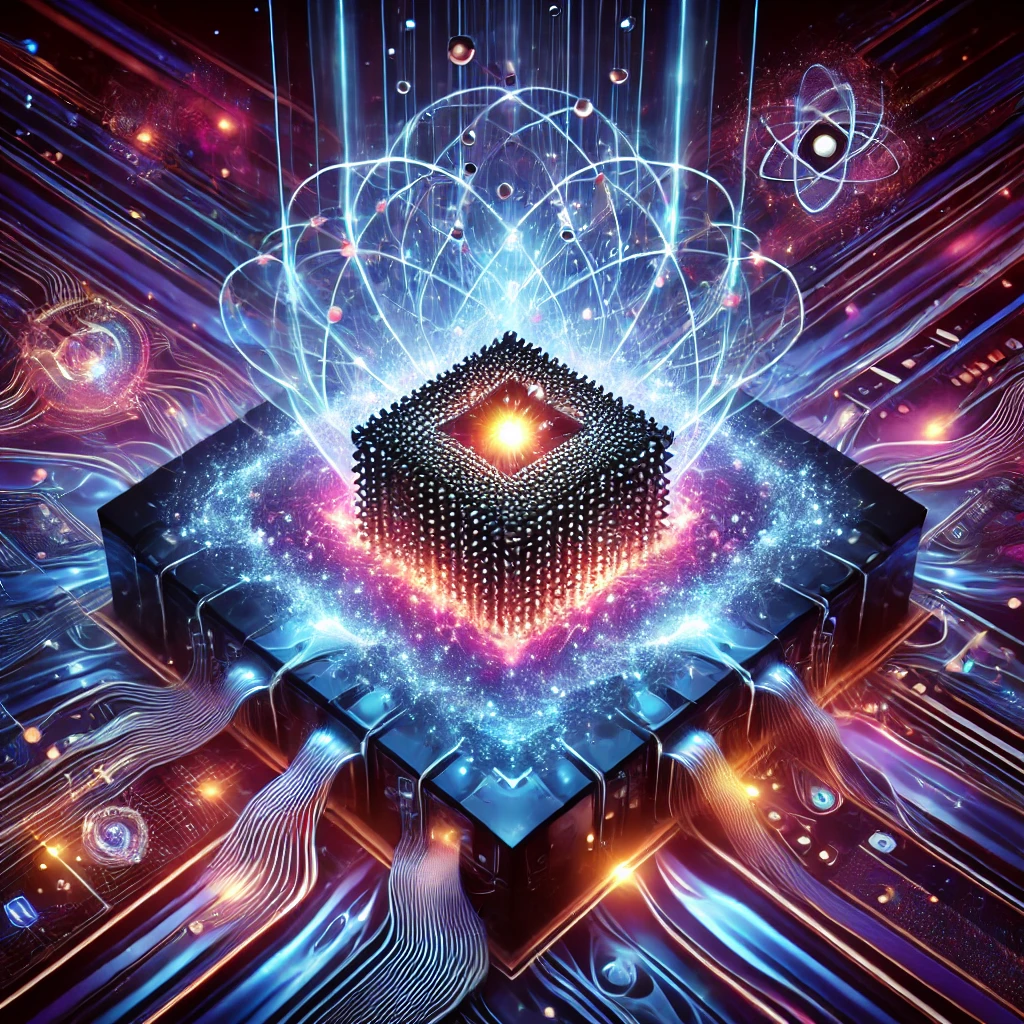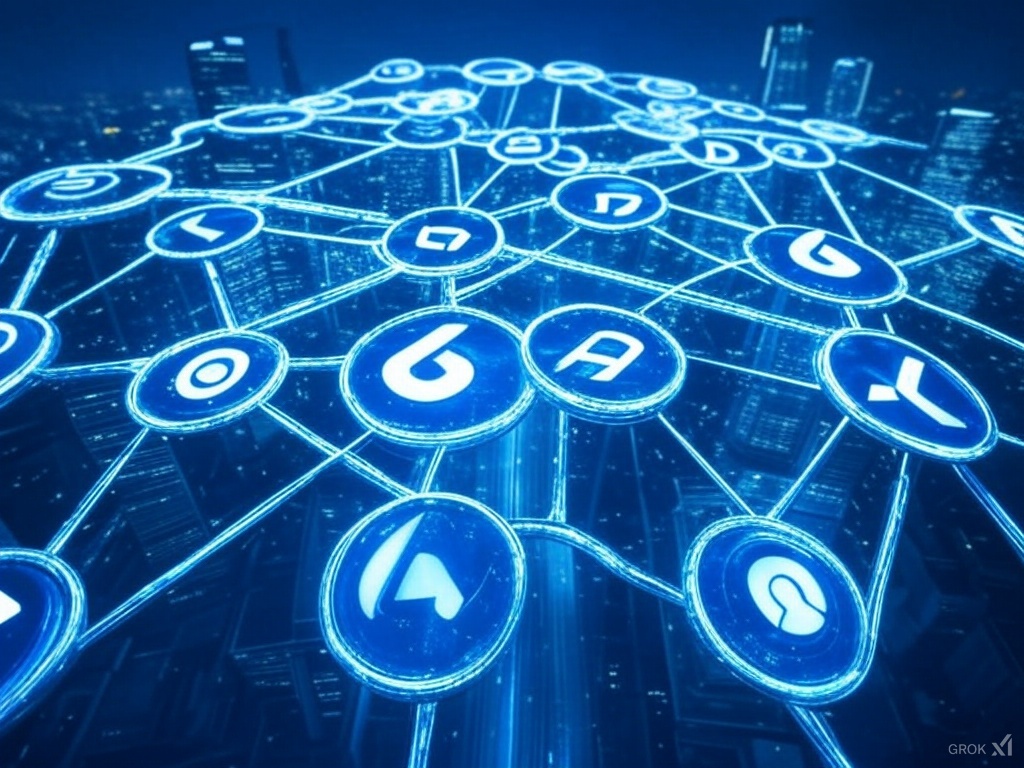The Creative Revolution: AI as Collaborator
In 2025, generative AI has evolved from a novelty to an essential creative partner across industries. What began with simple text completion and basic image generation has matured into sophisticated systems that can produce cinema-quality visuals, compose original music, write compelling long-form content, and even generate functional code from natural language descriptions.
This evolution represents more than just technological advancement—it's fundamentally changing how we approach creative work. Rather than replacing human creativity, these tools are augmenting it, handling technical execution while allowing humans to focus on conceptual direction, emotional resonance, and strategic thinking.
Let's explore how generative AI is transforming content creation across different media and what this means for creators, businesses, and consumers.
Text Generation: Beyond Basic Completion
Text generation has evolved dramatically from the early days of predictive keyboards and simple autocomplete:
1. Long-Form Content Creation
Modern text generation models can now:
- Maintain coherent narrative structure across thousands of words
- Adapt tone and style to match specific brands or authors
- Incorporate research from multiple sources with proper attribution
The Washington Post's AI-assisted journalism program now generates approximately 40% of their business and sports reporting, with human editors providing strategic direction and final approval.
2. Specialized Writing Assistance
Domain-specific models excel at:
- Technical documentation that accurately reflects code and systems
- Legal document drafting with proper terminology and structure
- Medical content that adheres to scientific accuracy standards
Law firms report that AI-assisted contract drafting has reduced document preparation time by 73% while improving consistency and reducing errors.
3. Multilingual Content Creation
Language barriers are dissolving through:
- Real-time content generation in multiple languages simultaneously
- Cultural adaptation beyond literal translation
- Preservation of tone, humor, and brand voice across languages
Global brands like Samsung now deploy marketing campaigns in 37 languages simultaneously, with AI ensuring consistent messaging while respecting cultural nuances.
Image Generation: From Novelty to Professional Tool
Image generation has transformed from producing interesting but flawed visuals to creating professional-grade imagery:
1. Commercial Photography Alternatives
Businesses are leveraging AI for:
- Product photography with perfect lighting and composition
- Lifestyle imagery featuring diverse models in various settings
- Consistent visual branding across thousands of assets
IKEA has transitioned 80% of its catalog imagery to AI-generated visuals, reducing production costs by millions while enabling more frequent updates and personalization.
2. Concept Visualization
Design processes have been accelerated through:
- Rapid iteration of visual concepts based on text descriptions
- Style transfer and adaptation of existing design languages
- Visualization of products before physical prototyping
Automotive designers at Toyota now generate hundreds of concept visualizations in minutes rather than weeks, allowing for more extensive exploration of design possibilities.
3. Personalized Visual Content
Marketing has been transformed by:
- Dynamic imagery that adapts to individual user preferences
- Personalized visual narratives based on customer data
- Real-time generation of visuals for specific contexts
E-commerce platforms report conversion rate increases of up to 32% when using AI to generate personalized product imagery that matches individual browsing history and preferences.
Video Creation: The New Frontier
Perhaps the most dramatic advances have come in AI video generation:
1. Synthetic Media Production
Professional video production is being augmented by:
- Text-to-video generation for complete short-form content
- Scene extension and background generation
- Weather and lighting condition manipulation
Netflix's experimental AI division now uses generative video to create preliminary visualizations of scripts, helping directors plan shoots more effectively and reducing production costs.
2. Animation and Visual Effects
Traditional animation workflows are being revolutionized through:
- Character animation from simple text prompts
- Style-consistent scene generation
- Automatic in-betweening and motion refinement
Pixar has integrated generative AI into its pipeline, reducing the time required for background animation by 60% while maintaining their distinctive aesthetic quality.
3. Personalized Video Marketing
Marketing videos can now be:
- Automatically adapted for different audience segments
- Localized with culturally appropriate settings and references
- Updated in real-time based on current events or trends
Coca-Cola's recent campaign generated over 10,000 unique video variations tailored to specific geographic regions and demographic groups, all from a single creative brief.
Audio and Music Generation
Audio generation has evolved from simple text-to-speech to sophisticated creative tools:
1. Natural Voice Synthesis
Voice technology now offers:
- Emotionally nuanced narration indistinguishable from human voices
- Voice cloning with proper licensing and compensation models
- Real-time translation with preserved vocal characteristics
Audiobook production companies report that AI narration has expanded their catalog by 300% in the past year, making previously unprofitable titles economically viable.
2. Original Music Composition
Music creation has been democratized through:
- Genre-specific composition from text descriptions
- Adaptive soundtracks that respond to visual content
- Style transfer between different musical traditions
Independent game developers now routinely use AI to generate complete adaptive soundtracks, a process that previously required specialized composers and significant budgets.
3. Sound Design and Effects
Audio post-production has been streamlined with:
- Automatic generation of environmental soundscapes
- Foley sound creation from visual references
- Audio restoration and enhancement
Film post-production timelines have been reduced by weeks through the use of AI-generated preliminary sound design that can later be refined by human sound engineers.
Interactive and Immersive Content
Beyond traditional media, generative AI is enabling new forms of interactive experiences:
1. Dynamic Game Environments
Video game development now leverages:
- Procedurally generated worlds with narrative consistency
- NPC behaviors and dialogue that adapt to player actions
- Real-time asset generation based on gameplay context
Ubisoft's latest open-world title features environments that continuously evolve based on player interactions, with AI generating new quests and scenarios that maintain narrative coherence.
2. Virtual Reality Experiences
VR content creation has been transformed through:
- On-demand environment generation from verbal descriptions
- Responsive virtual characters with consistent personalities
- Physics simulation for realistic object interactions
Therapeutic VR applications now allow clinicians to generate custom environments tailored to individual patient needs without specialized technical knowledge.
3. Augmented Reality Overlays
AR applications benefit from:
- Context-aware information visualization
- Real-time object recognition and annotation
- Personalized spatial computing interfaces
Retail AR applications can now generate product visualizations in the customer's space with accurate lighting and scale, significantly reducing return rates for furniture and home decor items.
The Creative Workflow Revolution
Beyond specific media types, generative AI is transforming the entire creative process:
1. Ideation and Concepting
Creative professionals now begin projects by:
- Generating dozens of concept variations from initial briefs
- Exploring unexpected creative directions through AI collaboration
- Rapidly visualizing abstract ideas for client feedback
Advertising agencies report that AI-assisted ideation has increased the number of viable concepts presented to clients by 400%, leading to more innovative final selections.
2. Iterative Refinement
The feedback loop has been accelerated through:
- Real-time visualization of requested changes
- Style-consistent alternatives for client consideration
- Automatic implementation of technical adjustments
Design agencies have reduced revision cycles from weeks to hours, allowing for more extensive exploration within the same project timelines.
3. Cross-Media Adaptation
Content can now flow seamlessly between formats:
- Automatic adaptation of content for different platforms
- Consistent brand expression across diverse media types
- Synchronized updates across entire content ecosystems
Major publishers now simultaneously release content across text, audio, video, and interactive formats, all generated from a single source document with appropriate adaptations for each medium.
Ethical and Professional Implications
The rapid evolution of generative AI raises important considerations:
1. Attribution and Compensation
The creative industry is adapting through:
- New licensing models for training data and generated content
- Blockchain-verified attribution chains for creative contributions
- Revenue sharing between human creators and AI platforms
The Creative Commons AI License now provides a framework for fair compensation when AI systems learn from or generate derivative works based on human-created content.
2. Authenticity and Disclosure
Transparency practices include:
- Content watermarking and provenance tracking
- Clear disclosure of AI involvement in creation
- Authentication systems for verifying human-created content
Major media outlets have adopted the AI Content Transparency Initiative, which requires clear labeling of the extent of AI contribution to published works.
3. Skill Evolution and Education
Creative professionals are adapting through:
- Focusing on prompt engineering and AI direction
- Developing expertise in human-AI collaboration workflows
- Emphasizing uniquely human creative qualities
Design schools have overhauled curricula to include AI collaboration techniques alongside traditional skills, preparing students for a hybrid creative landscape.
The Future of Creative AI
Looking ahead, several trends will shape the continued evolution of generative AI in content creation:
1. Multimodal Creation
Future systems will:
- Generate coordinated content across text, image, video, and audio simultaneously
- Maintain consistent narrative and stylistic elements across media types
- Enable seamless transitions between different forms of expression
Early prototypes demonstrate the ability to generate complete multimedia presentations from simple conceptual descriptions, with all elements stylistically and narratively aligned.
2. Collaborative Intelligence
Human-AI collaboration will deepen through:
- Systems that learn individual creative preferences over time
- Real-time co-creation interfaces with fluid handoffs
- AI that can explain its creative decisions and suggest alternatives
Creative professionals increasingly describe their AI tools as collaborators rather than utilities, with distinct "personalities" and approaches to problem-solving.
3. Democratized Creation
Access to creative capabilities will expand through:
- Simplified interfaces requiring minimal technical knowledge
- Affordable access models for professional-grade tools
- Educational resources that combine creative and technical skills
Small businesses report that AI-assisted content creation has allowed them to produce marketing materials of comparable quality to those of much larger competitors, leveling the playing field.
Conclusion: The Augmented Creator
The revolution in generative AI isn't replacing human creativity—it's amplifying it. By handling technical execution and expanding the range of what's possible, these tools are freeing human creators to focus on the aspects of creation that remain uniquely human: emotional resonance, cultural context, strategic thinking, and innovative conceptualization.
The most successful creators in this new landscape aren't those who resist AI assistance, but those who embrace it as a collaborative partner, developing the skills to direct these powerful tools toward their creative vision. The result is not just more efficient content creation, but new forms of expression that wouldn't have been possible through either human or machine effort alone.
As we move forward, the distinction between "AI-generated" and "human-created" content will likely become less relevant than the quality of the ideas being expressed and the impact they have on audiences. The future belongs to the augmented creator—human imagination amplified by artificial intelligence.


